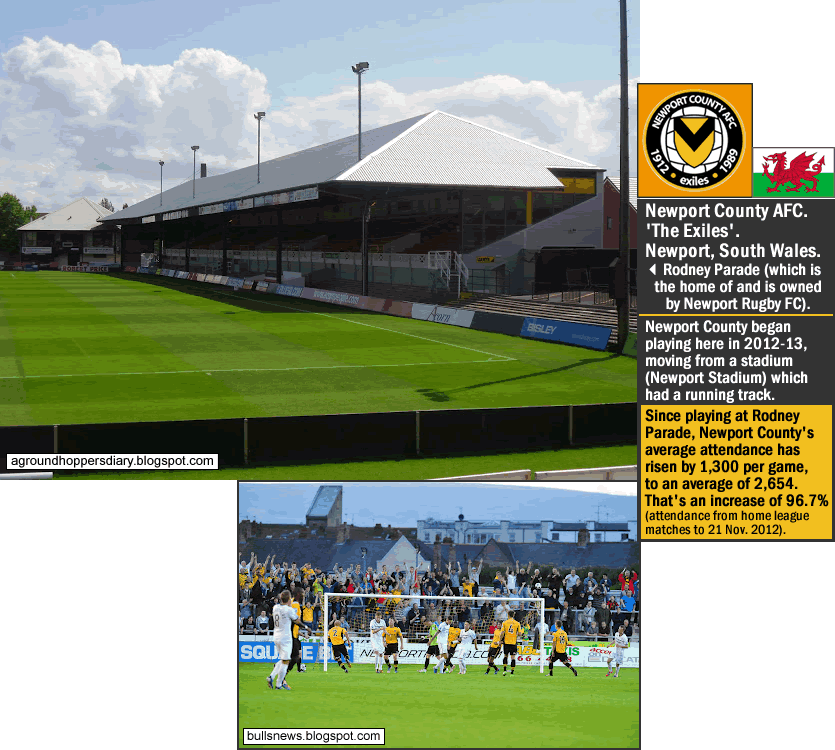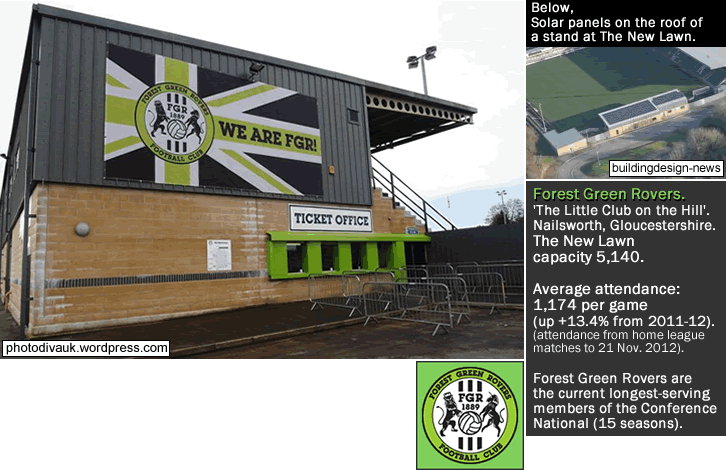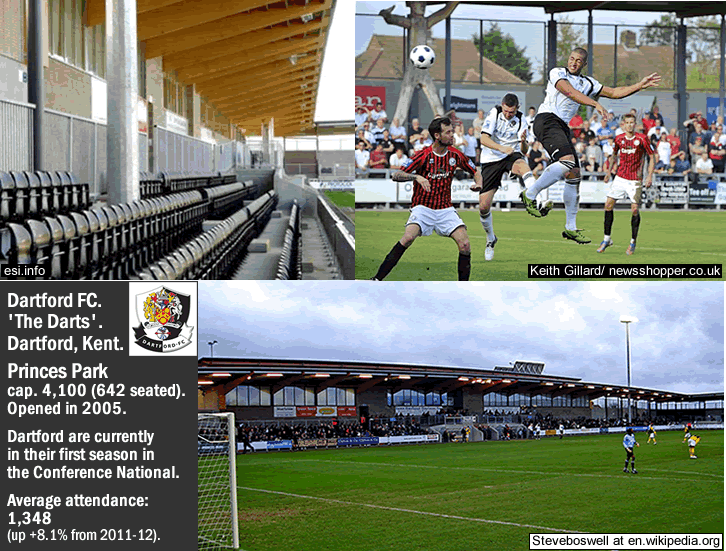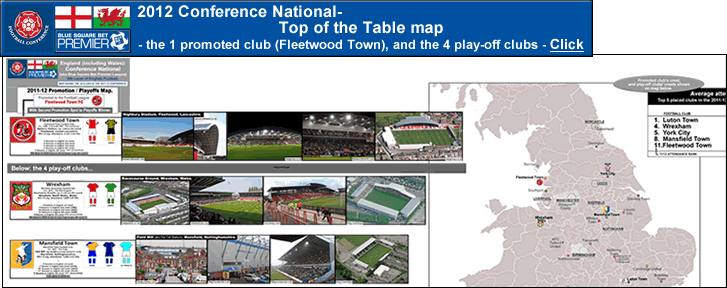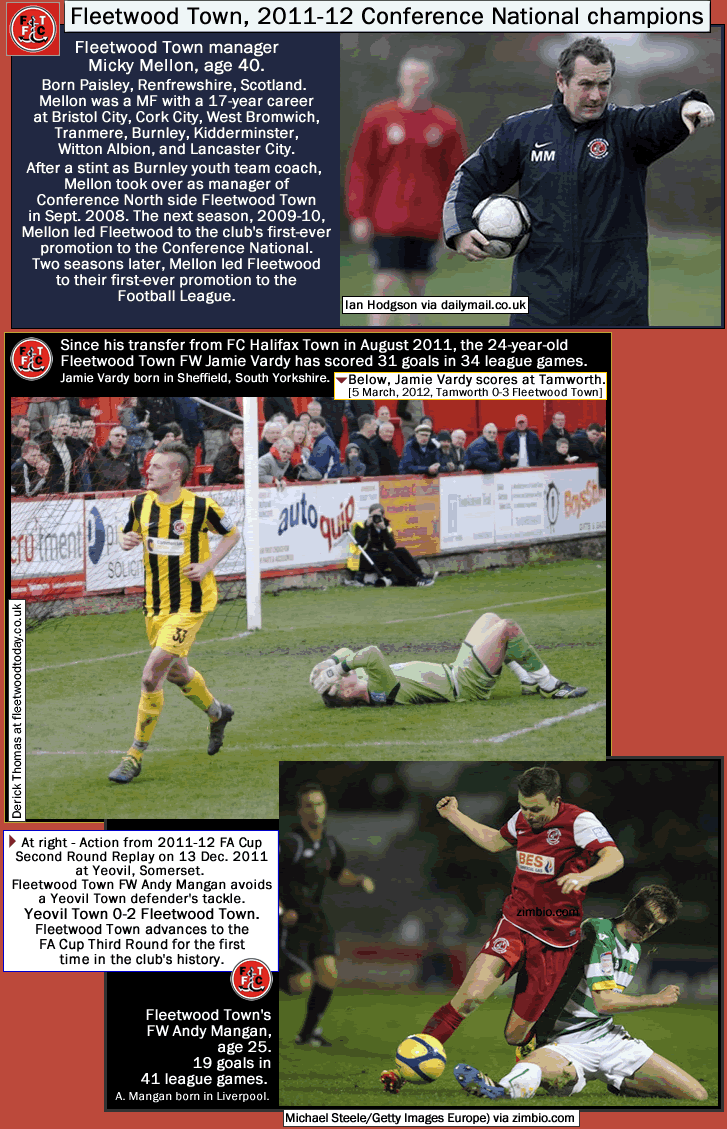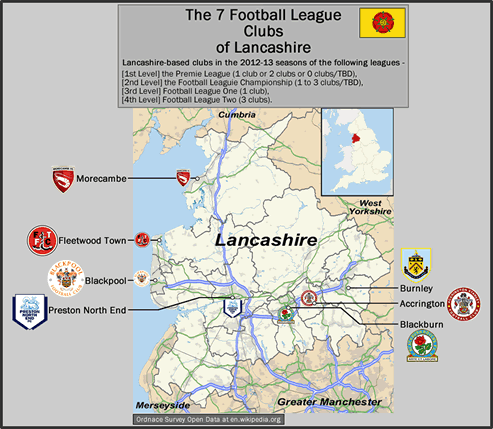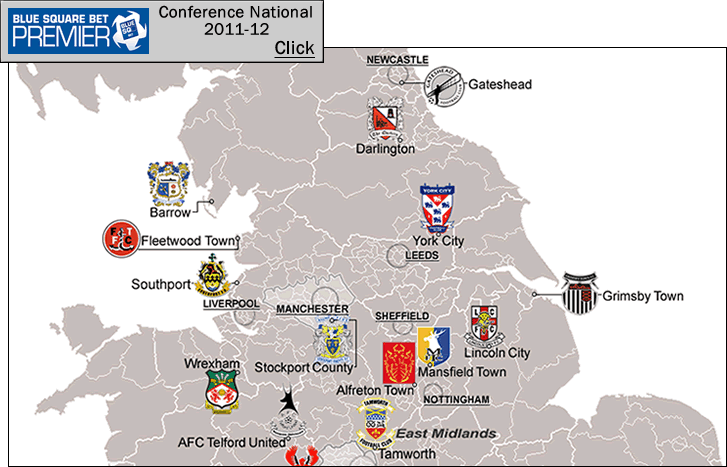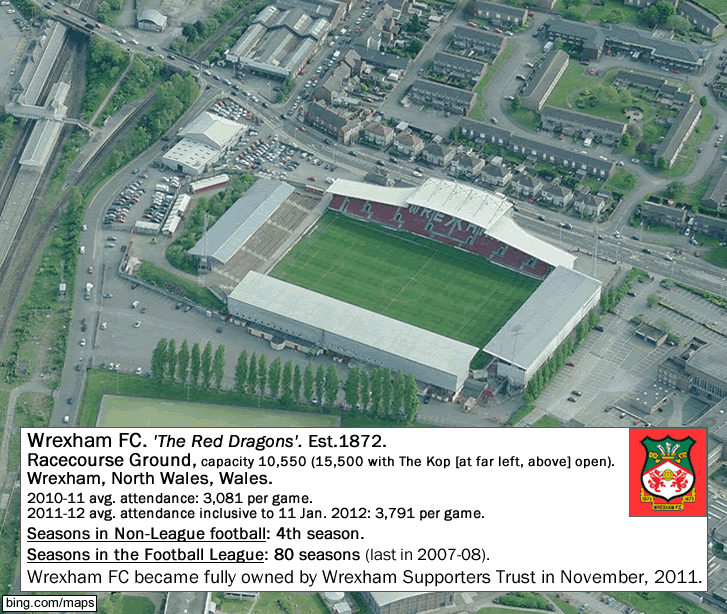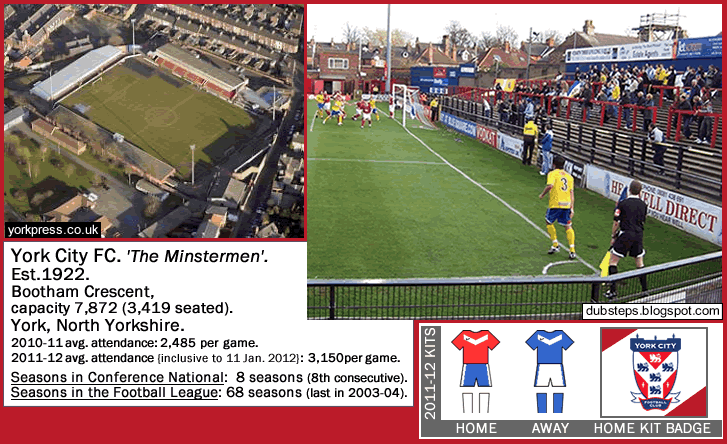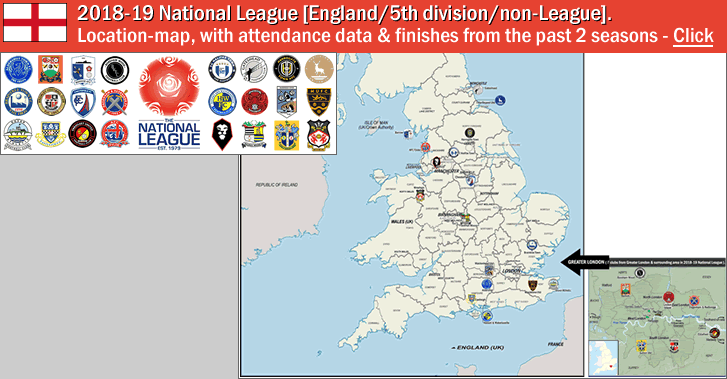
2018-19 National League (aka the Conference) [5th division England], map with 17/18-crowds-&-finishes chart
…
…
By Bill Turianski on 11 July 2018; twitter.com/billsportsmaps.
Links…
-2018-19 National League (en.wikipedia.org).
-Official site…thenationalleague.org.uk.
-Table, fixtures, results, attendance, stats…SUMMARY – National League [2018-19] (us.soccerway.com).
-5th division/National League page at BBC.com…bbc.com/sport/football/national-league.
…
Brief re-cap of the 2017-18 5th division…
Promoted to the Football League [4th division]…Macclesfield Town won the 2016-17 National League, winning automatic promotion back to the Football League, after 5 seasons back in Non-League football. Tranmere Rovers won the Play-off final, beating Boreham Wood 2-1, after being stuck in non-League football for 3 seasons.
Now relegated down to non-League/5th division/National League are… Chesterfield and Barnet.
Promoted up from the 6th division and into the National League/5th division are the four clubs profiled below…
(Promoted from National League North: Salford City and Harrogate Town. /
Promoted from National League South: Havant & Waterlooville and Braintree Town.)
•Salford City FC.
Est. 1940. Colours: Red shirts, White pants, Black trim…‘ The club’s colours are red, white and black [in tribute to Machester United's colours]. Prior to the change in ownership in 2014, the club played in tangerine and black (earlier colours include tangerine and white, and all navy blue).’…{-excerpt from en.wikipedia.org/wiki/Salford_City_F.C.}. Nickname: the Ammies [ie, the Amateurs]. Location: Kersal, Borough of Salford, Greater Manchester. Population of Kersal: around 12,900 {2014 figure}. Population of Salford: city-population of around 248,000 {2016 estimate}. Kersal, Salford is situated 2.75 miles (4.5 km) NW of Manchester city centre. Kersal, Salford is situated (by road) 203 miles (327 km) NW of London.
Manager of Salford City, Graham Alexander (age 46, born in Coventry, West Midlands). Alexander, the former Fleetwood Town and Scunthorpe United manager, was hired by Salford City on 14 May 2018.
Salford City: from the 8th tier, to the 5th division, in 4 seasons…
That Salford City have now achieved 3 promotions in 4 seasons should come as no surprise. That is because there is big money propelling the club forward. ‘Class of 92′-/-former-Manchester-United stars Gary Neville, Phil Neville, Ryan Giggs, Paul Scholes, and Nicky Butt bought the club in March 2014. Indeed, the consortium has ambitious aims for the non-League club, with a target of reaching the 2nd division (the League Championship) by 2029 (a 15-year-plan, as it were). In January 2015, manager Phil Power was sacked and the dual-manager team of Bernard Morley and Anthony Johnson were brought in. (Morley and Johnson had had success at another Greater Manchester-based lower-non-League club, Ramsbottom United: the two had gotten Ramsbottom promoted to the 7th tier in 2014.) Three months later in April 2015, Salford City won promotion from the 8th tier by winning the Northern Premier League D1-North, beating out Darlington by 4 points. That season (14/15), Salford City drew 384 per game (4th-highest in the league that year).
In September 2015, the Class-of-92-five sold half their stake in Salford City to Valencia CF owner Peter Lim (who is a Hong Kong-based billionaire), so that meant the Salford City project had even more wealth behind it. Then Salford City got a fair deal of exposure in October 2015, when the club was featured in the BBC television series ‘Class of 92: Out of their League’. And in November 2015, Salford City (est. 1940) qualified for the FA Cup 1st round for the first time ever, beating Notts County 2-0 (in a televised match), before losing to Hartlepool in a 2nd round replay.
In that 2015-16 season, the first full season under Morley-and-Johnson, Salford City were in the play-off places for most of the season. They finished in 3rd, and then beat Ashton United in the semi-final, and then beat Workington in the final, 2-0, in front of 2,000 at the old Moor Lane. That crowd there for that play-off final was about 1,300 larger than Salford usually drew back then (Salford drew 642 per game in 2015-16).
By 2016-17, Salford City, playing their first-ever season in the 6th tier (the National League North), had more than doubled their crowds. The club drew 1,395 per game in 2016-17. But Salford, who finished 3rd, flamed out in the play-offs, losing in the semi-finals to the eventual play-offs winner, Halifax Town.
In late 2016, the club had began a complete re-development of their Moor Lane ground. {See this article from StadiumDB.com, See what Salford City are building in less than a year.} On the 19th of October 2017, just eleven months later, the completely new venue was opened, with a new name: the Peninsula Stadium. {See this, Sir Alex Ferguson opens new Salford City stadium as Manchester United legends Ryan Giggs, Paul Scholes and Gary Neville watch on (dailymail.co.uk/football).} This, of course, drew even more fans to Salford City matches. In 2017-18, Salford ended up drawing 1,611 per game, which is about 1,200 more than they were drawing 3 seasons ago.
Meanwhile, in the 2017-18 season, Salford City cruised to the National League South title with relative ease. They had picked up, on a free transfer from Rochdale, a local-born striker, Jack Redshaw, who had a good deal of Football League experience (with Morecambe, particularly, scoring 15 goals for the Shrimps in 2012-13). Redshaw, evidently comfortable playing a couple levels lower and back in his home town, led Salford City with 17 league goals. For a time, it looked like the prolific-scoring Harrogate Town would contest the title, but the North Yorkshire side faltered down the stretch, while Salford won 5 straight from late-March-to-mid-April. And so, on the 21st of April, before a crowd of 2,466, Salford City clinched the title (and automatic promotion), with a game to spare, despite losing on the day (to Boston United 1-2) (see photo of Salford City fans’ pitch-invasion/celebration, below).
Then on 8 May, two-and-a-half weeks after clinching automatic promotion to the 5th division, joint-managers Anthony Johnson and Bernard Morley stepped down, because they could not come to an agreement with Salford City regarding new contracts. {See this article from official Salford City site, Mutual Consent (from 8 May 2018 at salfordcityfc.co.uk). Also see this short thread at Reddit/soccer [link at end of paragraph], and specifically this comment there…’The press release mentioned differences about personal terms and contract length. I think the last run of the documentary on the club had touched about that as well. Basically Salford were willing to pay top dollar for the best players/managers in the division. The whole team was basically poached from other teams in the division or even one or two division up. For the co-managers i believe that they were the highest paid manager in that division and the one above. The problem was that when it was divided by two, it wasn’t really more than what they were making in jobs outside’…(comment by szu at reddit.com/soccer/[thread: Salford part ways with joint-managers].}
Salford City might not make it to the 2nd division before 2030, but it is starting to look like this club, from a few miles north of Old Trafford, will be playing in the Football League pretty soon.
Salford City: promoted to the 5th division for the first time…

Photo and Image credits above -
Salford City 17/18 jersey, photo from umbro.co.uk/salford-city-fc. Salford Quays, photo by khaosproductions at flickr.com. Aerial shot of Peninsula Stadium, photo unattributed at thenationalleague.org.uk. Interior shot of Peninsula Stadium, photo by Shaun Best at twitter.com/@shaun_best. Carl Piergianni, photo by @SalfordCityFC at twitter.com/SalfordCityFC. Michael Nottingham, photo by Gareth Lyons at picssr.com. Tom Walker, photo by Clive Brunskill/Getty Images Europe via zimbio.com.
Jack Redshaw, photo by Salford City at twitter.com/@SalfordCityFC. Co-managers Bernard Morley and Anthony Johnson, photo unattributed at mirror.co.uk/football. ‘Class of 92′ Man U players who are co-owners Salford City (G Neville, N Butt, G Neville, R Giggs, P Scholes), photo by BBC via standard.co.uk. Fans and players celebrate promotion, photo from manchestereveningnews.co.uk/football.
…
• Harrogate Town AFC.
Est. 1914. Colours: Black-and Yellow [vertically-striped jerseys]. Location: Harrogate, North Yorkshire. Population of Harrogate: around 75,000 {2011 census}. Harrogate is situated (by road) 16 miles (26 km) N of Leeds. Harrogate is situated (by road) 21 miles (34 km) W of York. Harrogate is (by road) 210 miles (338 km) N of central London.
‘Harrogate (HARR-ə-gət) is a spa town in North Yorkshire, England. Historically in the West Riding of Yorkshire, the town is a tourist destination and its visitor attractions include its spa waters and RHS Harlow Carr gardens. 13 miles (21 km) away from the town centre is the Yorkshire Dales national park…’ {-excerpt from en.wikipedia.org/wiki/Harrogate}.
Manager of Harrogate Town, Simon Weaver (age 40, born in Doncaster). Simon Weaver has been manager of Harrogate Town for 9 years now. Weaver played 16 seasons as a MF, mainly in the 5th division, including 3 Football League seasons (at Lincoln City and at Kidderminster). In May 2009, he was hired as the player/manager of Conference South side Harrogate.
In 2010-11 Harrogate Town were a mid-table 6th-tier side, drawing 293 per game. In June 2011, Simon’s father, Irving (a multi-millionaire property developer), took over Harrogate Town. In 2017-18, the club went full-time professional, a rare step for a 6th-tier club. In the 6-year-span from 2012 to 2018, Harrogate Town saw an increase in crowd-size of over 800 per game: the club averaged 1,134 per game in 2017-18. A good family atmosphere at their Wetherby Road ground, and a good relationship with the Harrogate supporters trust, has helped increase their crowds. The team’s brand of football has probably helped swell crowds, too, as Harrogate were the highest-scoring team in the 6th tier by far. In 2017-18, the Harrogate squad were a well-organized unit that scored 100 goals, 19 more than anyone else in both the National Leagues North and South. But Harrogate were unable to keep pace with Salford City, and finished in 2nd place, giving them a bye in the first round of the play-offs. In the semi-finals, Harrogate Town beat Chorley 2-1, with both goal scored by Dominic Knowles, with the winning goal scored in the 94th minute. In the play-off final, Dominic Knowles scored a brace again, as Harrogate beat Brackley Town 3-0, in front of 3,000 at Wetherby Road (see screenshots and photos below).
And so 6 seasons after his father took over as owner of Harrogate Town, Simon Weaver’s Harrogate team have won promotion to the 5th division. And so now in 2018-19, following the back-to-back relegations of nearby York City, Harrogate Town are the highest-placed club from the county of North Yorkshire.
Harrogate Town: promoted to the 5th division for the first time…

Photo and Image credits above – Harrogate Town 17/18 jersey, from harrogatetownafc.com/online-store. View of Harrogate town centre, photo by Alamy via dailymail.co.uk. Wetherby Road front gate/office, photo by Joseph Gibbons at gibbos92.wordpress.com/2015/12/07/harrogate-town-fc-wetherby-road. Main Stand at Wetherby Road, photo by benrobinsongroundphotos.weebly.com/harrogate-town_wetherby-road. Family Stand, photo by Joseph Gibbons at gibbos92.wordpress.com/2015/12/07/harrogate-town-fc-wetherby-road. The two-way slope in the pitch at Wetherby Road, photo by thedribblingcode.wordpress.com/2011/11/07/sat-29-oct-2011-harrogate-town-v-hyde-conf-north. James Belshaw, photo from twitter.com/@HarrogateTown. Joe Leesley, photo by Ian Hodgson at dailymail.co.uk/football. Josh Falkingham, photo from harrogatetownafc.com. Dominic Knowles, photo from yorkshirepost.co.uk. Simon Weaver, photo from strayfm.com/news. Screenshot of 2nd goal (by Dominic Knowles) in 2018 National League South play-off final, image from HIGHLIGHTS | Harrogate Town 3-0 Brackley Town (Play-off Final) (uploaded by Through The Lens Visuals at youtube.com). Dominic Knowles, photo from yorkshirepost.co.uk. Promotion celebration, image from HIGHLIGHTS | Harrogate Town 3-0 Brackley Town (Play-off Final) (uploaded by Through The Lens Visuals at youtube.com).
…
•Havant & Waterlooville FC.
Est. 1998, via merger of: Havant Town FC, and Waterlooville FC. Colours: White with blue and yellow trim. Location: Havant, Hampshire. Population of Havant: around 45,000 {2011 census}. Population of Waterlooville: around 64,000 {2011 census}. Havant is situated (by road) 7 miles (12 km) NE of Portsmouth. Havant is situated (by road) 71 miles (114 km) SW of central London.
Manager of Havant & Waterlooville, Lee Bradbury (age 43, born in Cowes, Isle of Wight). Bradbury has been manager of Havant & Waterlooville for 5-and-a-half years now (since Nov. 2012). He was previously the youth team coach at Portsmouth. And before that, Bradbury was manager of the then-3rd-division Bournemouth (from Jan. 2011 to March 2012).
-Bradbury’s Hawks Sign Off Historic Season With Treble (thenationalleague.org.uk).
Havant & Waterlooville were formed in 1998, the result of a merger between two 8th-level/Southern League D1 South clubs: Havant Town FC, and Waterlooville FC. They are nicknamed the Hawks, and play at the small and bare-bones West Leigh Park in Havant, Hampshire. Havant is about 7 miles (by road) NE of Portmouth. Waterlooville is about 5 miles NW of Havant, and Waterlooville is about 8 miles N of Portsmouth. Havant & Waterlooville FC are most famous for their exploits in the 2007-08 FA Cup, when the Hawks beat Bognor Regis, Fleet Town, Leighton Town, York City (in the 1st round), Notts County (in the 2nd round), and then-3rd-tier-side Swansea City 4–2 (in a 3rd round replay). This amazing Cup run was capped off by dream 4th round tie at Liverpool, where Havant & Waterlooville took 6,000 fans. There at Anfield, Havant & Waterlooville actually took the lead twice on Liverpool, but they ended up losing 5-2. {Heroic Havant [Liverpool 5-2 Havant & Waterlooville, FA Cup 4th round match from 28 Jan 2008], by Kieran Fox at news.bbc.co.uk.}
Havant & Waterlooville had been charter-members of the Conference South in 2004-05, and had played in that 6th-tier league for 12 straight seasons before relegation to the 7th level, which happened on the final day of the 2015-16 season. Then Havant & Waterlooville bounced straight back to the 6th tier by winning the 2016-17 Isthmian League by 2 points over Bognor Regis.
Then in 2017-18, back in the National League South, Havant & Waterlooville ran neck-and-neck with Kent/Thames Estuary side Dartford, for the title. Havant played very well down the stretch (ultimately going 7-wins-2-draws-1-loss in their last 10 matches). But Dartford were even better, and had gained on Havant – Dartford won their last 9 matches. In their penultimate matches, Dartford won 2-0 over Bath City; but Havant & Waterlooville, in front of 1,153 at West Leigh Park, thrashed East Thurrock 6-1, scoring 4 goals in the last 28 minutes. (That flurry of late goals proved the crucial difference in the title-race.)
So with one more game to play in the 17/18 National League South, that made it Dartford and Havant & Waterlloville even on points, but with Havant having a goal-difference that was four better than Dartford. On final match-day, going into the final minutes, it was Dartford leading 1-2 to Bath City away, while Havant & Waterlooville, who had blown their 2-goal lead, were knotted 2-2 to Concord Rangers at West Leigh Park. Then in the 89th minute, Havant’s top scorer Jason Prior slotted home from the near left side (see photo and screenshots below). And Havant & Waterlooville had won the National League South over Dartford, thanks only to a goal difference of 3.
So now Havant & Waterlooville have made it two straight promotions, and will play in the 5th division for the first time. Havant & Waterlooville drew 879 per game in 2017-18. They will be one of the 4 or 5 smallest clubs in the 5th tier (if you go by crowd-size). Only Boreham Wood and Gateshead drew less in the National League last season, and Solihull drew the same as Havant did (879). And besides Braintree Town, the other newly-promoted sides drew higher (Salford and Harrogate).
Havant & Waterlooville: promoted to the 5th division for the first time.

Photo and Image credits above – 17/18 Havant & Waterlooville jersey, illustration from havantandwaterloovillefc.co.uk/shop. Aerial shot of West Leigh Park, image from bing.com/maps/Bird’s Eye satellite view. West Leigh Park [from an evening match in 2010], photo by Stuart Noel at footballstadiums.wordpress.com/2010/01/27/west-leigh-park-havant. Jason Prior, photo from havantandwaterloovillefc.co.uk. Lee Bradury, photo from havantandwaterloovillefc.co.uk. Ryan Young, photo from havantandwaterloovillefc.co.uk. Wes Fogden, photo unattributed at portsmouth.co.uk/football. Rory Williams, photo from portsmouth.co.uk/football. Jason Prior and Havant fans celebrate the promotion-winning goal in extra-time, screenshot from video uploaded by Marsh Media at youtube.com/[Havant & Waterlooville PROMOTION WINNING goal! (Jason Prior)]. Jason prior after scoring the goal that got them promoted, photo from havantandwaterloovillefc.co.uk. Pitch invasion following promotion-win, 2 screenshots from video uploaded by Groundhopping FC at youtube.com.
…
•Braintree Town .
Est. 1898, as Manor Works FC. Colours: Orange jerseys [previously yellow jerseys]. Population of Braintree, Essex: around 53,000 {2011 census}. Braintree is situated 10 miles (16 km) NE of Chelmsford and 15 miles (24 km) W of Colchester. Braintree is situated (by road) 51 miles (87 km) NE of central London.
Braintree Town began in 1898 as Manor Works FC, the works team of the Crittall Window Company. The company manufactured iron windows (and still is located in Essex, in the adjacent town of Witham). Back in 1898, this works team literally worked with iron, and that was the basis for their nickname of the Iron. That being said, the fact was that in 1898, the new club took over most of the squad of the recently defunct Braintee FC of the North Essex League. (The Crittall Window company was founded in 1889 in Braintree, Essex. By the mid-1890s the Crittall company employed 30 men. By 1907, the company had expanded and branched out with the Detroit Steel Product Co, the first steel window factory in the United States. By 1918, the Crittall Window Company employed 500 men.)
By 1911, Manor Works FC joined the Essex & Suffolk Border League (where they remained until 1928). In 1921, Manor Works FC changed its name to Crittall Athletic FC, to be more closely identified with their parent company. Crittall Athletic were founder members of the Eastern Counties League in 1935, and largely remained part of that competition for around 50 years. While part of the Metropolitan League in 1968, Crittall Athletic changed its name to Braintree & Crittall Athletic. They re-joined the Eastern Counties League in 1970. In 1981, all links with the Crittall Window Company were severed, and the club changed its name to Braintree FC. The following year of 1982 saw the club change to its present-day name of Braintree Town FC.
A decade later, in 1991, Braintree Town won promotion to the Southern League. But by 1996, travel costs were hurting the small club, so they asked league officials to be switched over to the Isthmian League, in order to reduce traveling fees. And so they were placed into the Division Three of the Isthmian League, although it was an effective drop of two divisions. But that did not hold back Braintree Town at all, because they promptly got themselves promoted twice in 2 seasons, ascending to the Isthmian League Division One in 1998. And after three seasons in the Isthmian League D-1, they were promoted to the Isthmian League Premier Division in 2001. Five seasons later, in 2005-06, Braintree Town won the Isthmian League Premier Division, winning promotion to the Conference South. That 2005-06 season also saw Braintree Town reach the 1st round of the FA Cup for the first time (losing 4–1 at Shrewsbury Town).
Braintree Town played 6 straight seasons in the 5th division, from 2011- to ’17. From 2006-07 to 2010-11, Braintree Town were a 6th division side that were drawing in the 400-500 range. They qualified for the Conference South play-off play-offs 3 times in this 5-season-span, and won promotion to the 5th division in 2010-11 by winning the Conference South by 7 points over Farnborough. In that promotion-winning season of 2010-11, Braintree drew 661 per game, and their support increased even more in their first season in the 5th tier, when they drew 901 per game and finished a rather decent 12th-place. The next season, 2012-13, Braintree finished in 9th place. The next season, 2013-14, Braintree drew an all-time high of 994 per game, and the team finished in 6th, just 4 points off the play-offs. The next season of 2014-15 saw Braintree Town slip down to 14th place. But the following season of 2015-16 saw Braintree qualify for the 5th division play-offs by finishing in 3rd place (losing in the semifinals to eventual promotion-winners Grimsby Town). This play-off-qualifying run in 2015-16 was when the Cowley brothers were running the Braintree squad. (Manager Danny Cowley and his brother Nick [1st team coach] were at the helm at Braintree for one season, then moved on in the summer of 2016 to Lincoln, and then the Cowley brothers got Lincoln City promoted to the Football League in 2017.) However, 2016-17 was disastrous for Braintree Town, and the team obviously felt a void after the departure of the Cowleys; under manager Hakan Hayrettin, Braintree were relegated on the last day of the 2016-17 National League season, dropping back down to the 6th tier. Heyrettin left by mutual consent and Brad Quinton was hired as the new Braintree manager in May 2017. Brad Quinton, who is Braintree Town’s all-time appearances record holder, had been manager at 7th-division-side Enfield Town for 3 years before taking the reins at Braintree. Quinton was an integral part of the 2010-11 Braintree squad that won automatic promotion to the 5th division. Quinton had played as a DMF for Braintree Town for 12 seasons, making 546 appearances (and scoring 69 goals).
Back down in the 6th tier in 2017-18, Braintree Town qualified for the National League South play-offs thanks to a solid final 10 matches (6-wins/3-draws-1-loss). But Braintree finished in 6th, meaning they would have to play the new extra elimination round in the play-offs, and they would have to play away the whole way. Braintree beat Hemel Hempstead away 0-0/3-2 on penalties in the eliminator. Then Braintree beat Dartford away 0-1 in the semifinal, with the winning goal by Braintree MF Billy Crook (who made the Team of the Year/see photo and caption below). And then in the final, Braintree beat Hampton Richmond Borough away 1-1/3-2 on penalties. The equalizing goal that forced extra time and penalties was scored by MF Reece Grant (see photos and captions below). And so Brad Qunton’s Braintree Town were back in the 5th division. Braintree Town drew 524 per game in 2017-18. They return to the National League/5th division as one of the smallest clubs…they drew lower last season than every other club that are in the 2018/19 National League, and of the whole 5th division in 2018-19, only Boreham Wood (who drew an all-time high of 626 per game in 2017-18), are arguably a smaller club than Braintree Town.
Braintree Town bounces straight back to the 5th division.

Photo and Image credits above – 17/18 Braintree Town jersey, photo from andreascartersports.co.uk. Main Stand at Cressing Road, photo by phildanmatt.weebly.com/braintree. Shot looking towrds pitch at Cressing Road, photo by Russell Cox at footygrounds.blogspot.com/[July 2011/Cressing Road]. Panorama shot of Cressing Road by phildanmatt.weebly.com/braintree. Billy Crook, photo by John Weaver at eadt.co.uk/sport. Brad Quinton, photo by Chris Jarvis at braintreeandwithamtimes.co.uk/sport. Traveling Braintree fans at Hampton & Richmond Borough for the National League South play-off final, photo by thegrassrootstourist.com/[vanarama-national-league-south-promotion-final]. Reece Wright scoring and celebrating (3 photos) by thegrassrootstourist.com/[vanarama-national-league-south-promotion-final]. Reece Wright celebrating [inset photo], by Jon Weaver at braintreeandwithamtimes.co.uk/sport. Braintree players and supporters celebrating promotion; Manager Quinton and captain Marc-Anthony Okoye celebrating Braintree Town’s promotion: 2 photos by thegrassrootstourist.com/[vanarama-national-league-south-promotion-final].
___
-Thanks to the contributors at National League (English football) (en.wikipedia.org).
-Havant & Waterlooville 16/17 attendance from nonleaguematters.co.uk.
-Thanks to Nilfanion…Blank map of UK historic counties, by Nilfanion (using UK Ordnance Survey data), at File:United Kingdom police areas map.svg (commons.wikimedia.org). Blank relief map of Greater London, by Nilfanion (using UK Ordnance Survey data), at File:Greater London UK relief location map.jpg.
-Thanks to Soccerway for upper-division-Non-League attendance figures, us.soccerway.com/national/england/conference-national.


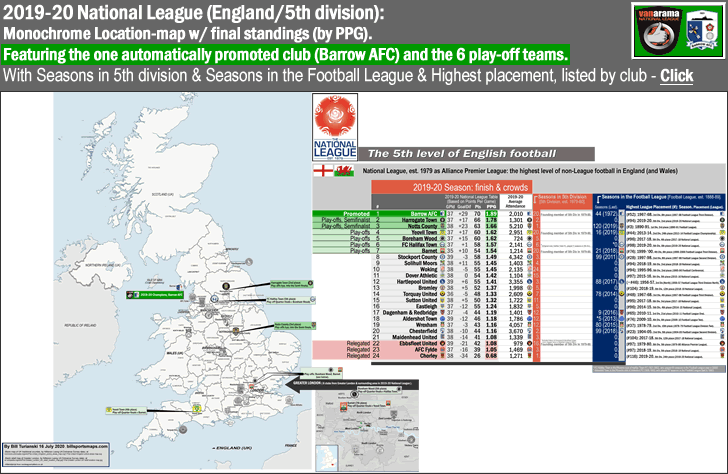
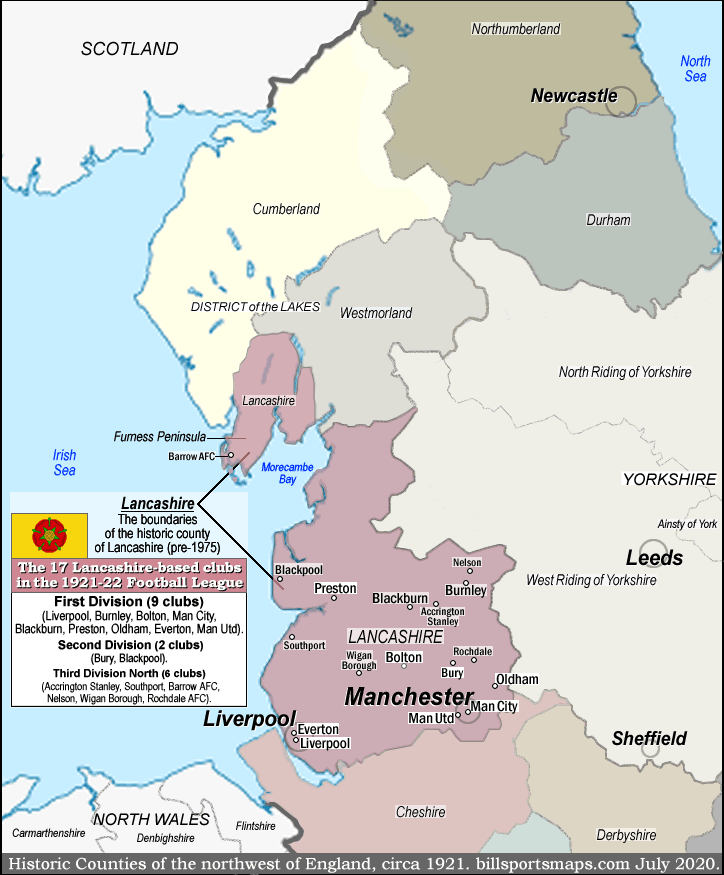

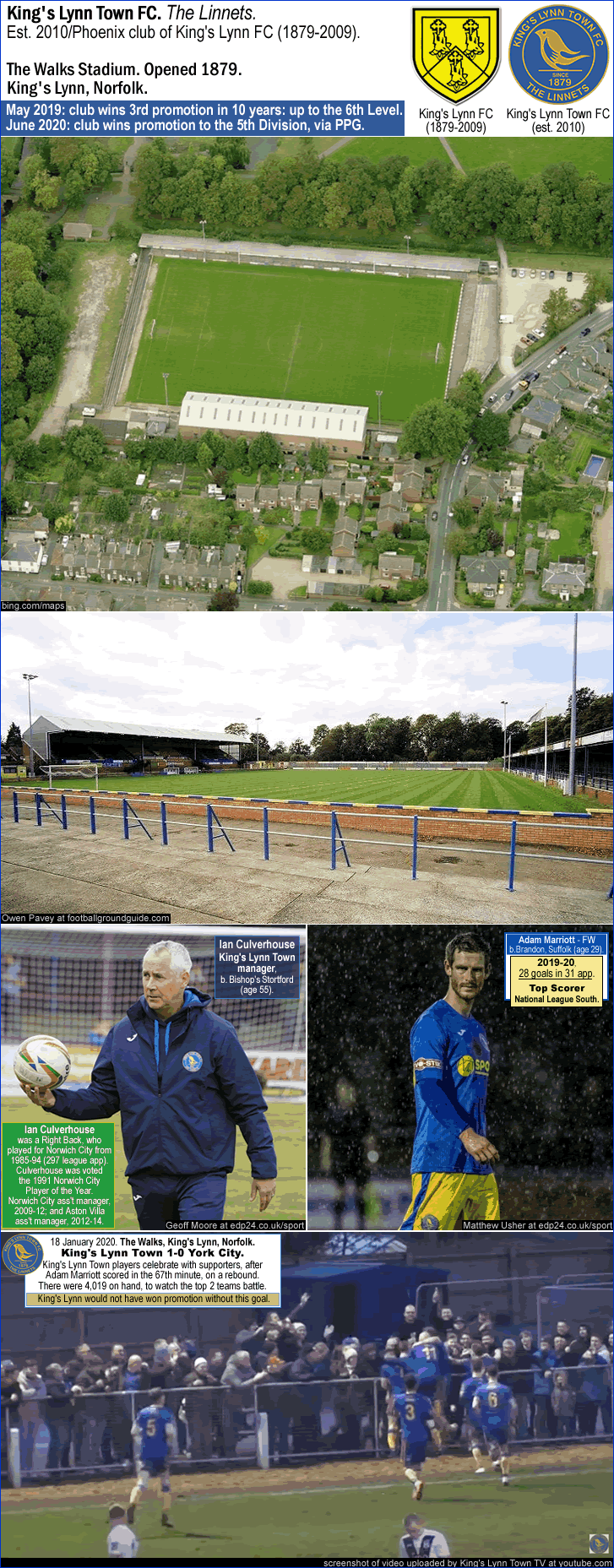

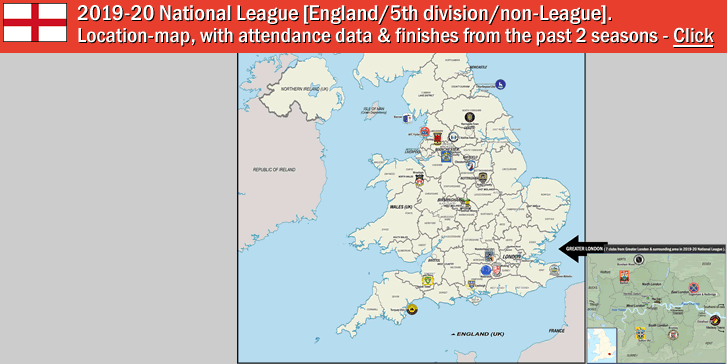
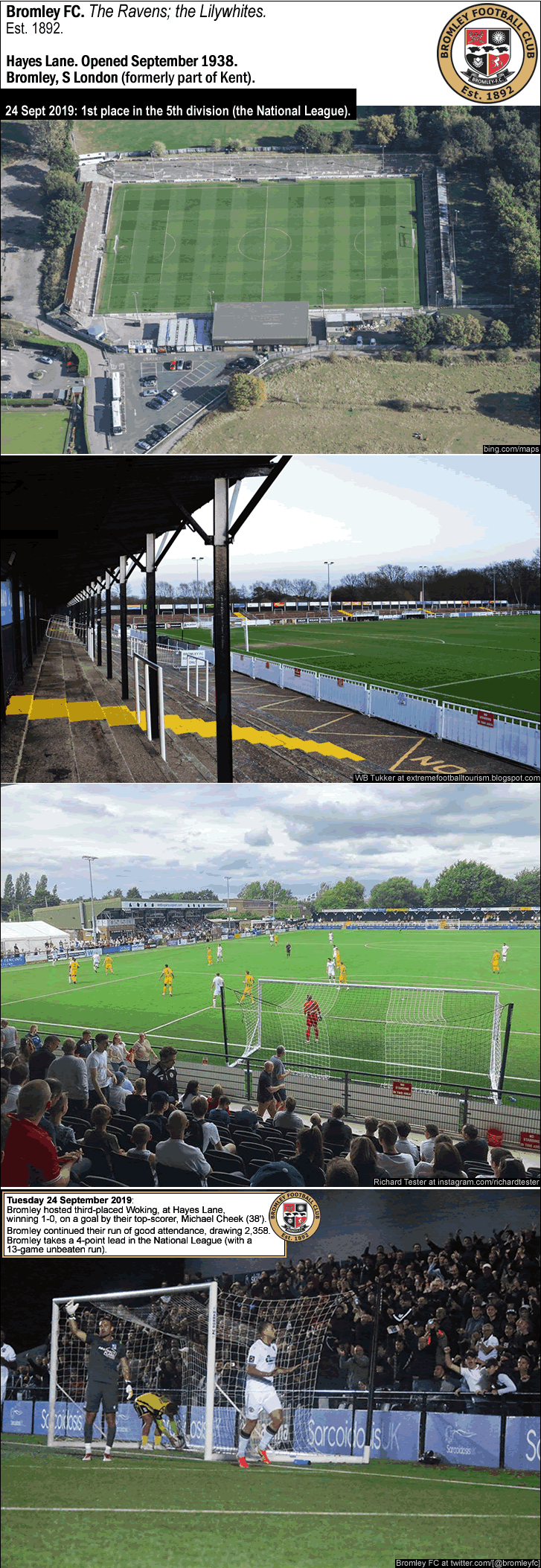





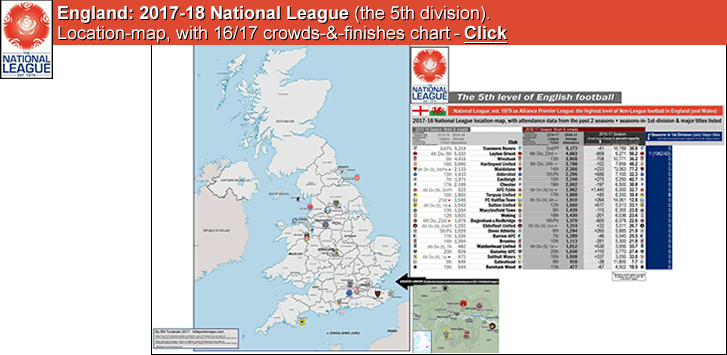




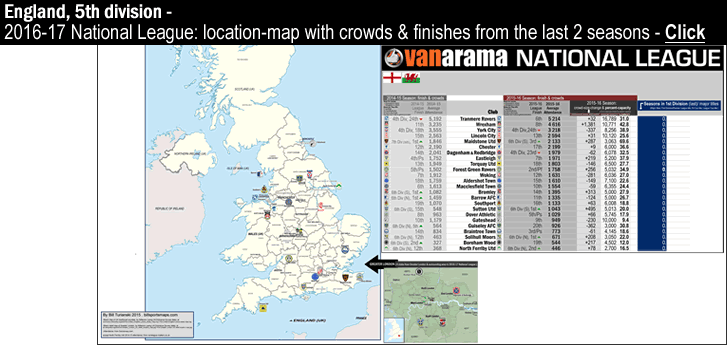

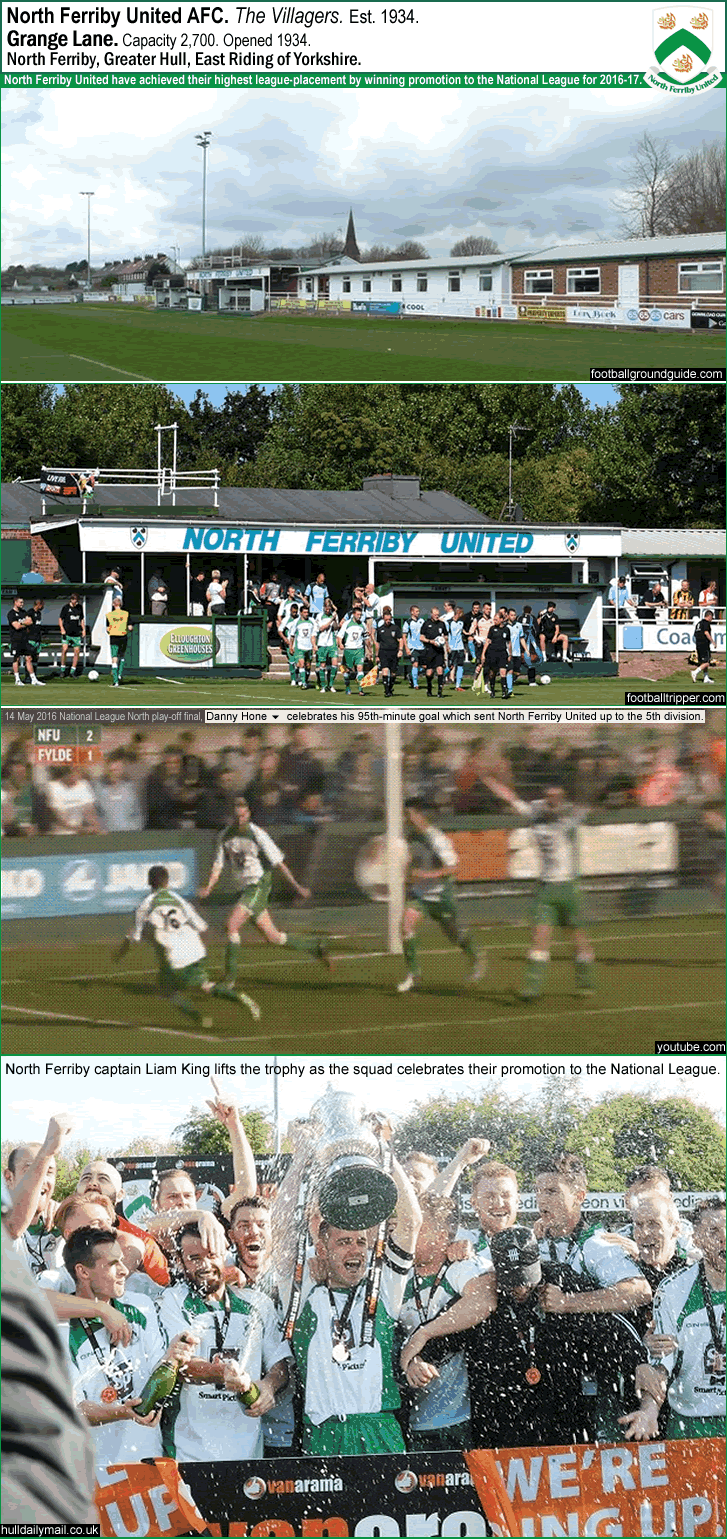
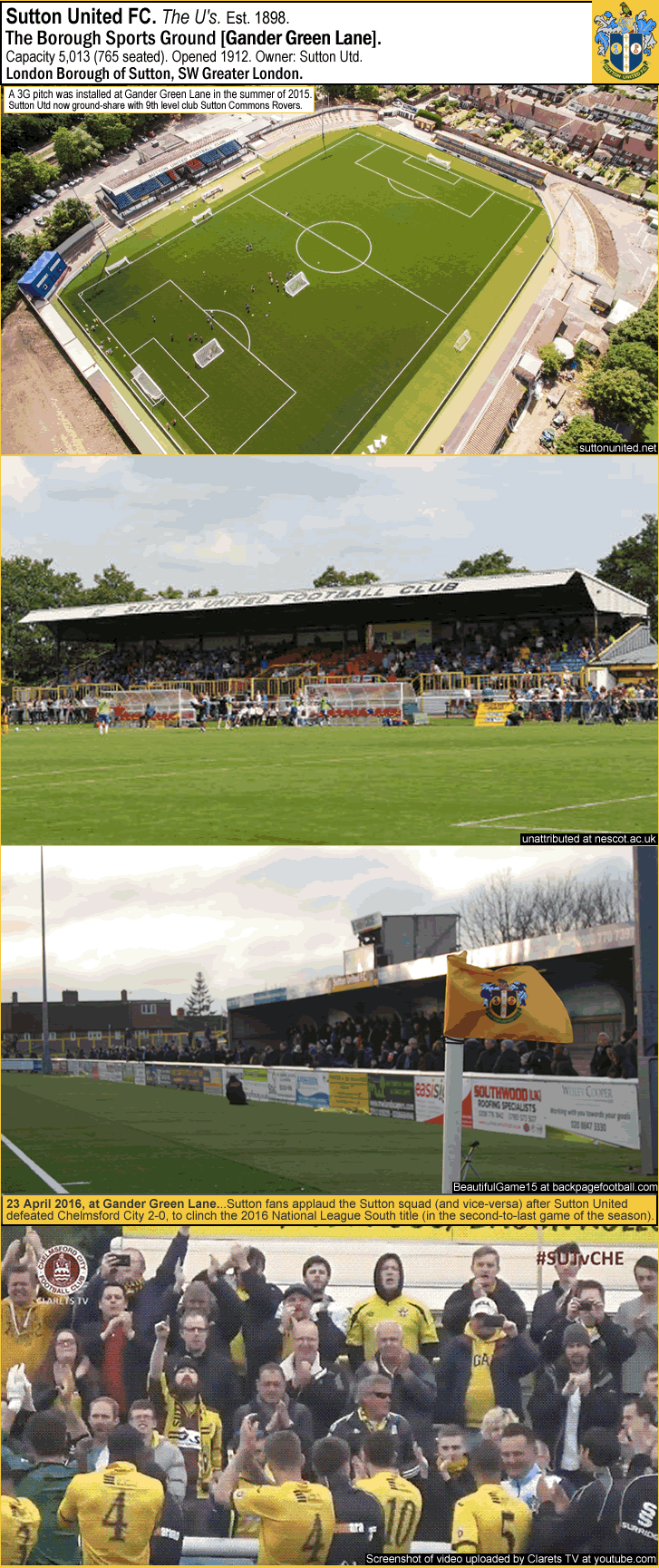

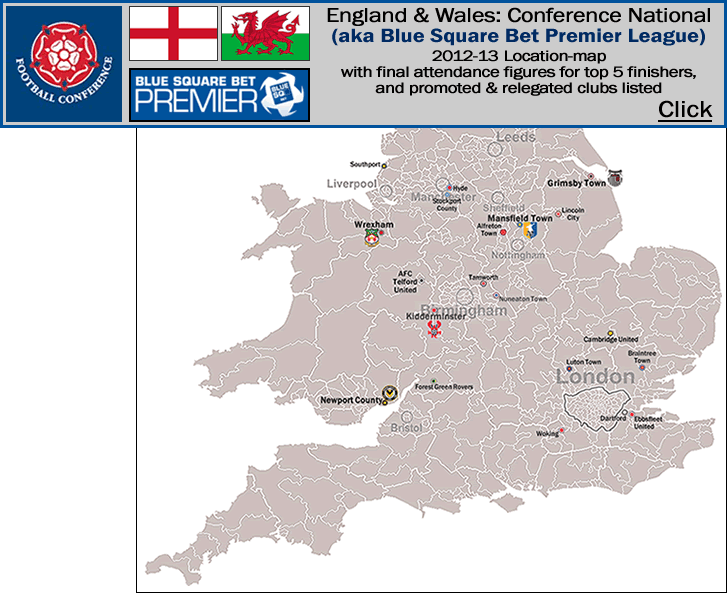

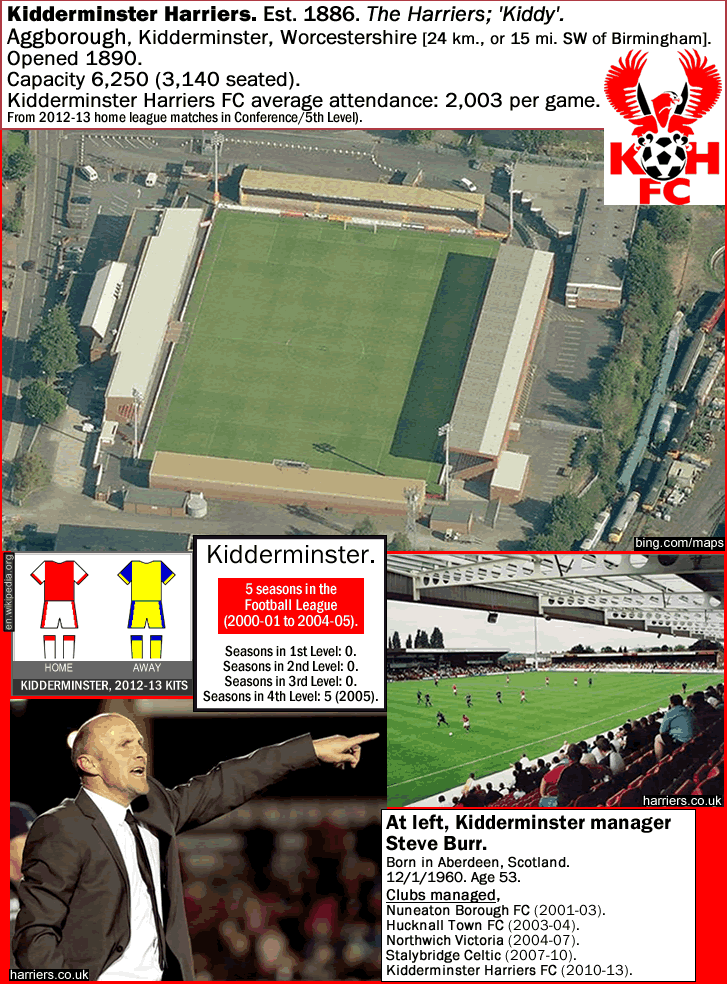
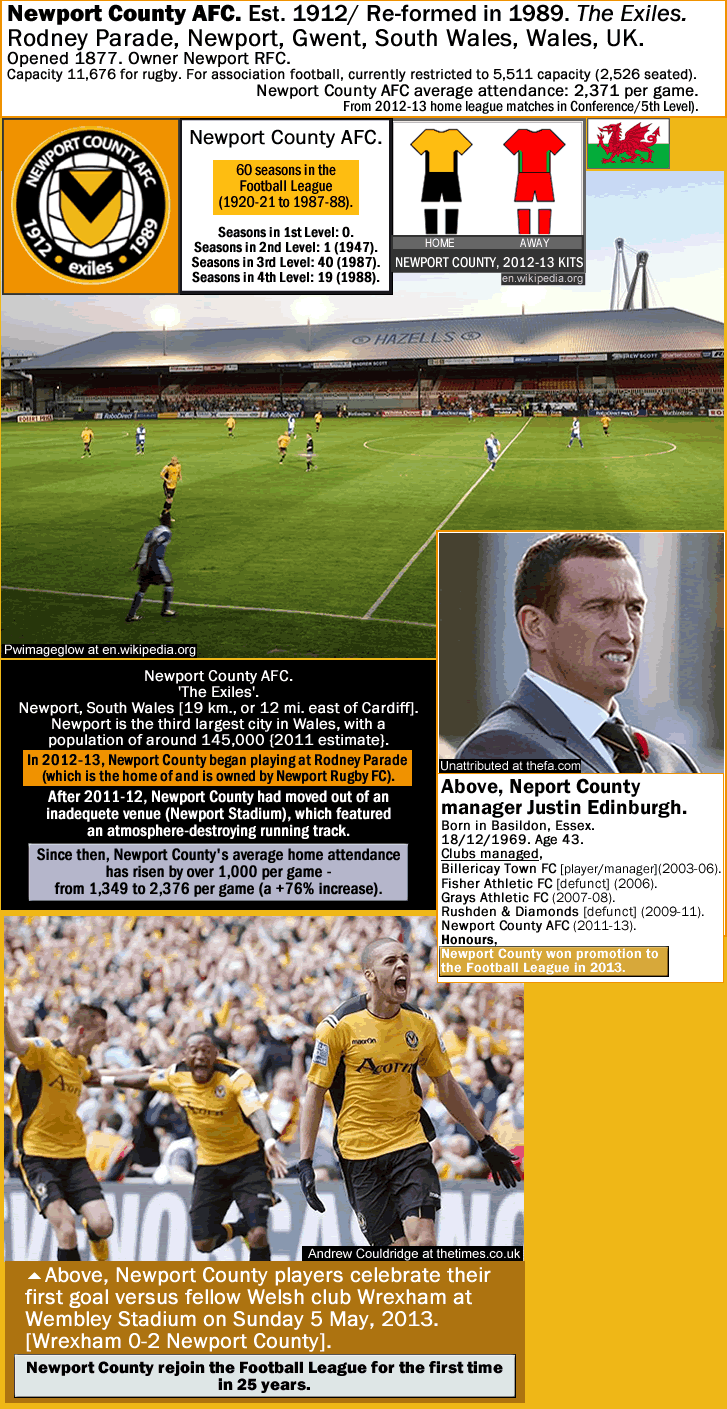
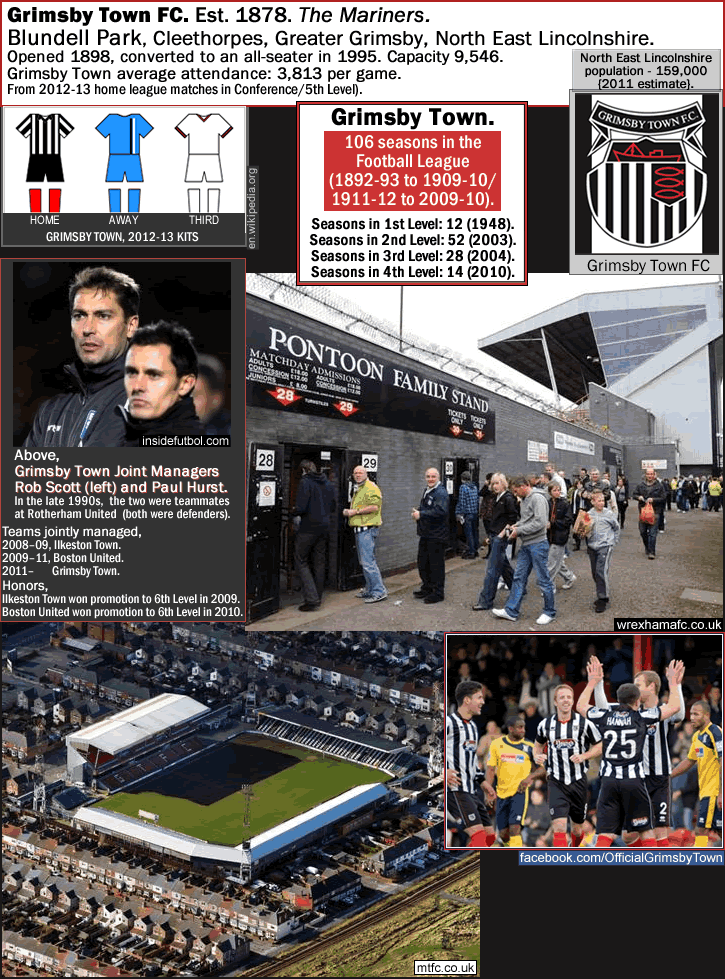


 Photo credit above -
Photo credit above - 